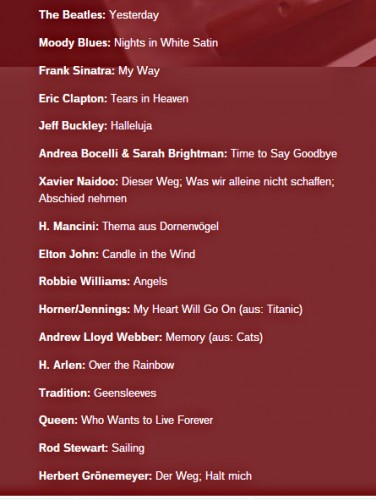The following story is not new and it has been published elsewhere. I’d not seen it, and perhaps you hadn’t, either. It was sent to me by Lawrence’s mother, Virginia Prifti.
“Lawrence’s death and cremation was incredibly powerful for us as a family. We decided to take control, organise our own goodbyes and keep Lawrence with us at home. It was very therapeutic and helped us to come to terms with his death over the five days. During that time I learnt that death was nothing to be afraid of –but like birth, it is a completely natural event.”
In late Spring 2004, my six-year-old son Lawrence was diagnosed with a very rare genetic degenerative terminal condition called Adrenoleukodystrophy (ALD). We were told that we might have another six months of near normality, but that after that the disease would take its hold quickly and that Lawrence would end up in a vegetative state.
By December Lawrence had developed a sickness bug and ended up in hospital. He recovered quickly and was discharged from hospital the following day, but when I went to get him up I discovered to my horror that he had lost the ability to walk. This was the start of a pattern – sickness bug followed by a dramatic decline – until the ability to move, talk and swallow had disappeared.
In late July Lawrence developed yet another sickness bug. My husband, Peter, and I took the decision that Lawrence had spent too long in hospital recently and that we would keep him at home. When we first received the diagnosis I was adamant that I did not want Lawrence to die at home, but now I realised that he needed to die in his home, surrounded by familiar things, and with us with him.
On the evening of July 22nd 2005 Lawrence died at home, surrounded by his family and all things familiar. We had been able to love and comfort him and I put his favourite Mozart CD on which seemed to calm him. I sat next to him and stroked his arm. I told him just to let go – that he shouldn’t fight. I told him how much we loved him and how much we were going to miss him, but that he would always be with us.
After Lawrence had died, we took him up to his bedroom and laid him on his bed, we changed him into his favourite clothes – combat trousers and a khaki T-shirt. We knew we should turn our minds to his cremation, but I have always had a problem with the undertaking business, and find the idea of lavish funerals distasteful.
I had seen a programme about a ‘green funeral service’ and had been struck by how lovely it was. I couldn’t imagine how one would go about organising this, but the local crematorium advised me that it would be much easier if involved a funeral director. I phoned our recommended undertaker and was horrified by the call – he wanted to come and get Lawrence’s body that afternoon, but wouldn’t tell me how much he was going to charge for the service. He wouldn’t entertain my idea of an ‘eco friendly’ cardboard coffin and tried to push me into a quick decision. He ‘phoned again to say that he would be in the vicinity soon so could collect the body. When I told him that this was not possible, he started to sound quite menacing – he told me that he had heard that I was considering a ‘DIY’ funeral and informed me that I couldn’t just do my own thing, I needed to ‘play by the book’.
I realised that there was no way that I was going to let my precious child go off with some complete stranger. I wanted him at home – it was still where he belonged even though he was dead! I still needed to look after him.
Two friends who had been medically trained very kindly offered to come and give Lawrence what I called his ‘makeover’. They closed his eyes and mouth and washed him, cut his nails and did his hair. All the time they were with him they chatted to him and treated him with such care and tenderness. This was the turning point for me – I realised that if I treated him as if he was still alive, I would find going into his room much less scary.
A friend brought an industrial air conditioner to keep his room chilled. Another friend came to visit with a gorgeous bunch of highly scented stocks, and another with a posy that she had made out of lavender and rosemary also to put in his room. I was amazed and very touched at the number of people who wanted to say goodbye to him. Imogen our daughter, meanwhile had made herself scarce. We were worried about the fact that she was scared to be in the house with Lawrence.
Over the next couple of days the house was inundated with visitors, most of whom were keen to go to Lawrence’s room to say goodbye to him. Most people stroked his hair or kissed his forehead, and I had to keep a hairbrush beside the bed to rearrange Lawrence’s hair into his usual style so that he looked like himself!
Imogen, by this time, had completely come to terms with Lawrence being at home, and spent hours in his room with her friends – chatting to him, doing his hair, stroking his arms and kissing him. It was really lovely to see her behaving like this, having been so scared of Lawrence just after he had died.
On the Wednesday we decorated the coffin.We had found a supplier of wicker coffins on the Internet – it was the most beautifully hand crafted object. Our neighbours helped to decorate it, creating posies using garden flowers and herbs. Another neighbour made the most magnificent bouquet out of garden roses, honeysuckle and wild flowers. I wanted something soft for Lawrence to lie on, so Imogen cut down half our leylandi hedge and mixed this with the best part of a rosemary bush – it did look very comfortable and smelled lovely.
and then just before we left, Peter carried Lawrence downstairs and put him into it. We loaded him into our car– it felt as if we were going on a family outing. We had a very simple but moving ceremony at the crematorium.
The whole process of Lawrence’s death and cremation was incredibly powerful for us as a family. Keeping Lawrence at home was very therapeutic and helped us to come to terms with his death over the five days. During that time I learnt that death was nothing to be afraid of – like birth, it is a completely natural event. I am still so glad that we did things the way we did, it helped us to move on and feel more positive about Lawrence’s illness and death.
I would encourage anyone who has ever thought about making their own arrangements for a funeral or cremation to go ahead. It is very simple and we found the local crematorium very helpful. The Register Office can also help you complete the paperwork. Most district nurses would be willing to come out and sort the body out after death. There are various sites on the Internet which sell alternative coffins – cardboard, willow or bamboo.
Virginia Prifti
ED’S NOTE: Virginia set up a charity project in Lawrence’s memory. It’s called Lawrence’s Roundabout Well Appeal. All money raised is used for building PlayPumps™ in Africa. “The roundabout playpump combines a children’s roundabout with a pump. The pumps are usually installed in schools to harness the natural energy of children. As the children play on the roundabout they pump water into a holding tank at the rate of 1400 litres per hour.” You can see Lawrence’s wells here.






